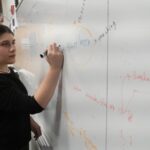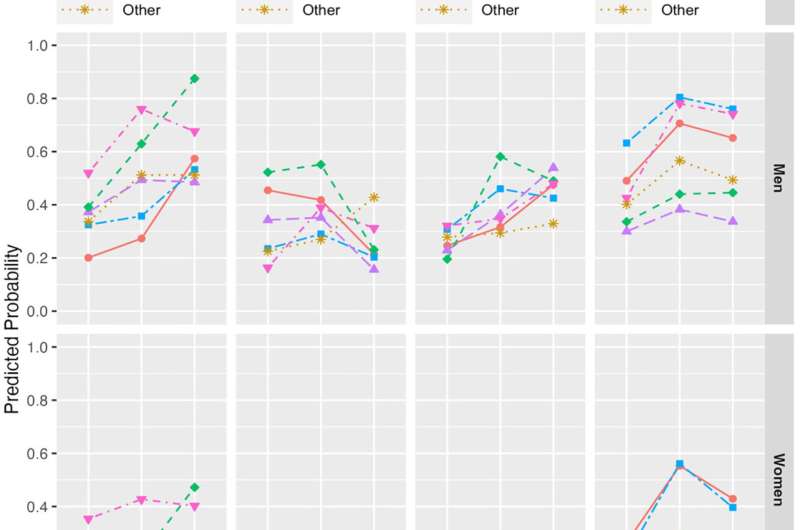Dr. Byeongdon Oh, Assistant Professor of Sociology at SUNY Polytechnic Institute and Director of the Diversity, Equity, Inclusion, and Belonging (DEIB) Research Center, has released a groundbreaking study on the impact of ‘STEM immigration’ on workforce diversity in the United States. Published in the journal Socius: Sociological Research for a Dynamic World, the study examines how immigration intersects with race and gender diversity within the U.S. STEM workforce.
The concept of STEM immigration, as introduced by Dr. Oh, refers to the rising number of foreign-born individuals entering the U.S. to pursue careers or degrees in science, technology, engineering, and mathematics. This trend is largely facilitated by policies such as Optional Practical Training (OPT), H-1B visas, and pathways to permanent residency. According to Dr. Oh’s analysis, based on a nationally representative dataset, immigrant men and women from non-White racial and ethnic backgrounds are as likely or more likely than their U.S.-born White counterparts to hold STEM degrees.
Understanding the Dynamics of STEM Immigration
The findings of Dr. Oh’s study highlight significant disparities in the STEM workforce, particularly among immigrants. These disparities are more pronounced among the 1.25th generation—those who completed their K–12 education abroad before pursuing higher education in the U.S. This group often faces unique challenges that are not addressed by current social interventions aimed at diversifying the STEM workforce.
“The limitations of focusing narrowly on U.S.-born individuals in efforts to foster a more diverse and inclusive STEM workforce are evident,” Dr. Oh notes in his study. “Addressing the nuanced barriers faced by immigrant STEM professionals is crucial for true inclusivity.”
The Role of Policy and Education
STEM immigration is not a new phenomenon, but its implications have grown more complex over time. Policies like the H-1B visa program have been instrumental in attracting international talent, yet they also spark debates around job competition and wage impacts. Dr. Oh’s research suggests that while these policies help diversify the workforce, they also necessitate a reevaluation of how inclusivity is measured and achieved in STEM fields.
Historically, the U.S. has relied on immigration to fill gaps in its workforce, particularly in high-skilled sectors. The current landscape of STEM immigration reflects broader global trends, where countries compete to attract the best and brightest minds. However, this competition also brings to light the systemic barriers that immigrants face, such as recognition of foreign credentials and access to professional networks.
Future Research and Implications
Looking forward, Dr. Oh plans to expand his research by analyzing more comprehensive datasets and conducting in-depth interviews with STEM workers at SUNY Poly and other institutions. The aim is to uncover deeper insights into the barriers and experiences of STEM immigrants and their impact on workforce development in the U.S.
“By understanding the lived experiences of STEM immigrants, we can better tailor policies and interventions to support their success and integration,” Dr. Oh asserts.
The implications of this research are significant for policymakers, educators, and industry leaders. As the U.S. continues to evolve demographically, fostering an inclusive and diverse STEM workforce will require a multifaceted approach that considers both domestic and international dynamics.
In conclusion, Dr. Oh’s study serves as a critical reminder of the complexities surrounding STEM immigration and its role in shaping the future of the U.S. workforce. By addressing these challenges head-on, the U.S. can better harness the potential of its diverse talent pool, ensuring that its STEM fields remain innovative and globally competitive.
About The Author
 How to Observe July’s Brightest Planets: A Stargazer’s Guide
How to Observe July’s Brightest Planets: A Stargazer’s Guide EPA Staff Accuse Trump Administration of Undermining Science
EPA Staff Accuse Trump Administration of Undermining Science FAU’s Rising Star Paulina DeVito Wins Esteemed NSF Fellowship
FAU’s Rising Star Paulina DeVito Wins Esteemed NSF Fellowship Nanoparticle Breakthrough Enhances Chemotherapy Precision and Safety
Nanoparticle Breakthrough Enhances Chemotherapy Precision and Safety Downton Abbey’s New Era and Ryan Gosling’s Sci-Fi Debut
Downton Abbey’s New Era and Ryan Gosling’s Sci-Fi Debut